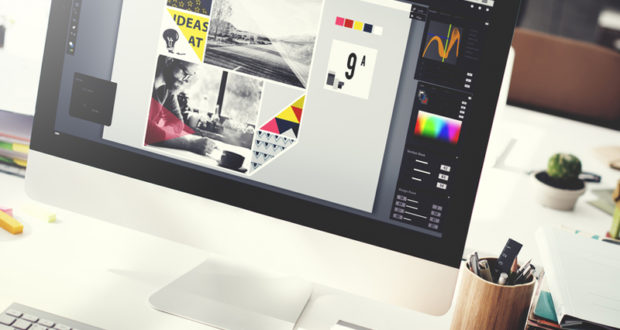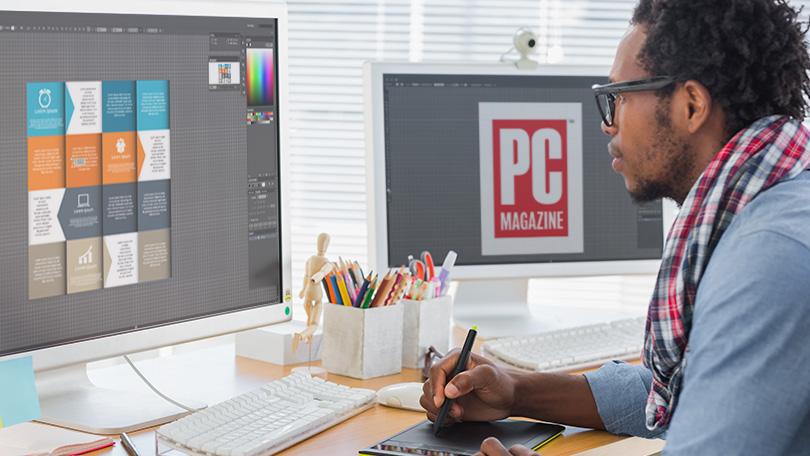You can polish your talent and can develop skills with the tools of the best designing software like Photoshop. But one thing which is hard to develop is the eye that can identify the difference between the good design and the bad design.
People believe that there is nothing like the good or bad design. It is all about the communication. Either the design is communicating the message thoroughly or not. For example, if the poster is about offering dissertation help then its design should be related to writing and the elements should represent the writing services. However, even to examine this, you need a good understanding of your audience and the eye which can point out even the slightest of errors in the design before getting published.
The reasons are very obvious. If you are a professional designer then your critic on any design should be different, accurate and precise as compared to a non-designer person. That is why it is important to train your eye. For this, you have to do some different kinds of practices and methods.
In the next lines of this article, I am going to tell you about those 10 ways through which, every designer can train his eye to identify the elements that make any design into a good one or bad one.

1. Try to Find a Focal Point:
If you had any academic education of the designing then you must have heard your teacher talking about the focal point of the design. This is what you have to remember while evaluating any design. The focal point is a hook or something that attracts the viewer. It could be anything in a design. But it should be included in a design or else it is not even going to be worth watching. For more details, check over here.
This focal point can be an image (vector or raster), graphics, headline or promotional content or any other text placed aesthetically in the design that can not only catch the eyeballs of the viewer but can also make them view it for enough time to understand the message.
However, choosing the right element in the design as the focal point is important. If your eye notices that the element in the design. Designer has chosen to make the focal point is not worthy enough to be a focal point, then this design cannot be count as a good design.
For example, a poster for any FMCG company should have its products as the focal point instead of any other element of design because it is the main element of the poster and by only making it a focal point, your designed job can communicate the message to the viewer.

2. Try to Find a Visual Flow in Design:
The focal point will create the interest of the viewer in the design. But to navigate their eyeballs from one thing to another, a design has to be organized with the proper layout. In a professional designing business, the practice of creating a layout of the design through which a designer can decide, what element of design a viewer should watch first is called the hierarchy.
It can also be described as the size, arrangement and spacing between the elements of design are called the hierarchy. Through this hierarchy, the designer made a viewer start navigating the design from the left, right, up or down of the focal point. It is all based on the arrangement of the elements which create a visual flow for the viewer.
Being a designer, you have to keep the hierarchy of the design in mind while evaluating any design. It is your job to see what an ordinary person cannot see in a design. If you are unable to navigate your eye, according to the hierarchy set by the designer then laymen can never be able to get the message of the design which will turn it into a bad design.
Just let your eye go into the visual flow of the design and if you are able to navigate the entire design according to the hierarchy without any hassle, then the design is good to be published.
3. Is it balanced?
Designing is all about balancing the elements. If your elements are unbalanced or their alignments are not perfect, it could become a piece of the joke in this fast-paced life where you get instant reviews on everything through social media platforms. But, the designer’s eye evaluates the balance of the design from another perspective.
Every designer knows about the symmetry and asymmetry. But the implementation of it can become difficult a lot of times. Balancing symmetric design is one of the basics of the designing. But balancing an asymmetrical design can become tricky sometimes.
Moreover, a normal person doesn’t have the sense of picking out the asymmetrical balance, but being a professional designer, it is your duty to determine either the design is asymmetrically balanced or not. To find out either the design is asymmetrically balanced or not, just focus on the alignment of the elements.
Alignment play most important factor when you have to balance any design asymmetrical. That is why you have to give the alignment a foremost importance and if your eye picks any nonaligned element in the design, then you have to stop it from publishing.
4. Can you read the text?
After getting your eye trained in evaluating the minor things which are important but hard to pick, now it is a time train your eye to evaluate some obvious elements of a good design too. The readability of the text is the first obvious thing.
If you have a mockup of any poster in your hand or in the digital form and you are having even 10% of difficulty in reading the text, then your designer needs a dose of discussion. The reason is simple. If you are finding it hard to read the text even by spending minutes observing the designing piece, then how could a random man walking through the streets or surfing the internet could read it who have the minimum attention span.
Therefore, the moment your mind triggers that this text is even slightly harder to read is the same moment you should make the decision that this design is not fit enough to be in the market.
5. Where is emphasized?
While evaluating any design, if you are asking this question from yourself or the designer, then this is a bad design. The hierarchy that we discussed earlier is all based on the level of emphasizing that you have created in your design. The focal point has to be highlighted or emphasized most. Then the second thing which is usually the text in the poster should be emphasized, but less than the focal point and this chain will continue until the end.

6. What is the connection?
Again! If you are not picking it up on your own, then there is a flaw in the design. It doesn’t matter how aesthetically perfect your designing elements are, when you are designing for the commercial purpose, then the message has to be imperative than everything else.
This is one of the biggest challenges for every designer to connect his design concept to the message and the purpose of getting that content designed. This is where the designer has to create the balance between the designing elements and the visual message. If you are not getting the message or the purpose behind designing that piece, then it doesn’t matter how beautiful the design is, you cannot allow it to get published in the market.
7. Clutter and breathing area:
According to a designing rule, a design should have some breathing space. But for most of the people, all the designing rules are made to be broken and without breaking them, a designer cannot achieve the brilliance of creativity.
That is why adding the breathing area is not necessary for every design. Remember those vintage posters with the bold fonts? Those posters didn’t use to have any breathing space. In fact, you can call them the cluttered posters. Yet, no one has claimed those posters as unaesthetic.
The reasons are very simple. It was the demand of that time and people like to see cluttered posters and could able to get the message better through those posters. That is why the designers of that time didn’t have any choice but to use the bold font and create the cluttered poster.
That is why, while evaluating any designing content, your eye needs to be trained enough that you can determine either that designing job needs some breathing space or the clutter is better.
8. Is it thematic?
The probabilities are high that the designing job for a brand that you are evaluating could have done some other designing job too. If you don’t know about it, then asking it from the client is important because it would help you a lot in understanding the mindset of the client.
It would help you in understanding that what are the expectations of the client and according to it, you can judge the theme of the designing job. If the client hasn’t told your designer to change the theme, then there is no need to switch it and to take any risk. It is better to carry the same theme. You have to train your eye by pointing some prominent designing elements in the past designing jobs of the client and has to see either the design that your designer has created is thematic or not.
9. Is it according to the brief?
Even if your designer is the Picasso of graphic designing, he still have to follow the brief of the client doesn’t matter how much unaesthetic he sounds. It is your job to finalize the designs and you are responsible to fulfill all the demands of the client. That is why you have to create an image first in your mind, according to the brief and then evaluate the designing job that your designer has made for you.
Through this, you will be able to compare it with your imagined design and can easily point out the flaws or the elements which are going against the brief from the client.
10. What is the file format?
Do not ask it from the designer. If you have a hard copy in your hand, then you should be able to determine the resolution of the file that the designer has set while designing it.
Moreover, this could also become your habit of checking the file format before sending the designing job to the client.
Final Words:
Apart from all these methods, the most important thing that can help you in developing a good designing eye is to use all your experience. Always put yourself even while evaluating the designs of others and ask questions like what better you could have done with that job. The answers that you will get is the same which is required for that job.











